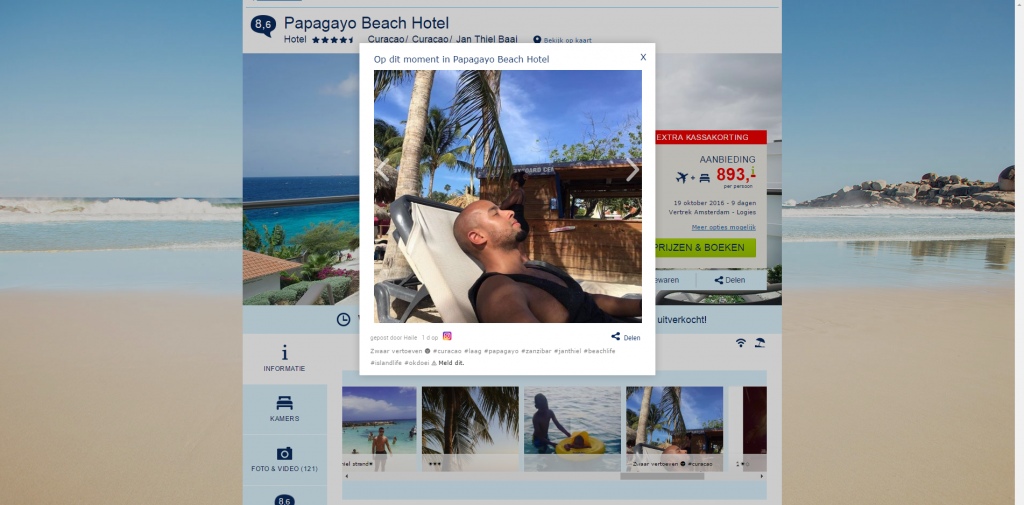The Traveler’s Buyer Journey
As prospective travelers hunt for their next vacation, they will make 121 visits to travel websites within 45 days of their trip and 44% of Millennial travelers will seek recommendations from their connections on social media.
On the majority of the sites they visit, they’ll be presented with gorgeous photos of destinations, resorts, activities, and accommodations. Perfectly lit and staged – and usually devoid of any actual travelers. So they head to social media – including Instagram, Facebook, and YouTube – to review pictures, videos, and comments about the actual experience for real travelers.
Instead of losing future customers to other sites, leading travel suppliers are bringing real traveler experiences from social media to their own digital properties. These companies recognize that blending user-generated content (UCG) from travel experiences with their own content gives prospective travelers the info they want – to see individuals like themselves basking in the sun at the beach or riding a gondola to the top of the mountain, wherever their aspirations take them – and even influences whether they purchase or not.
Social-Infused Landing Pages for Resorts
TUI.nl is among these companies experimenting with incorporating traveler UGC on their resort pages. In the Fall of 2016, they conducted a live A/B test with 88 of their resort listings, in order to understand if and how their site visitors would respond to real-time, relevant social posts from real travelers.
In half of the visits, a curated social stream of real traveler posts was included as an integrated part of the page contents. The other half did not include the stream and was used as the control group.
The traveler social posts that comprise the social stream are curated automatically using Crowdynews’ social aggregation & curation platform. Starting with AdWords campaigns or simply a URL, the Crowdynews algorithms convert this information into social media- friendly queries and geo-location tags. The platform then scans social media networks, like Instagram, to find and fetch traveler social media posts that match those queries – continuously and in real-time.
Safe, Relevant & Real-time
Advanced filtering, including white and black listing and profanity blocking, automatically excludes posts that are deemed offensive or showcase a competing brand.
In addition, TUI’s social media editors can manually reject posts, for example to exclude fuzzy pictures, or items that don’t fully represent the destination or brand. Crowdynews’ predictive moderation module monitors this curation behavior and learns – the next time a similar post is processed, the system will auto-moderate it out of the stream. Editors may unblock the post later at their discretion; however, auto-moderation saves time and effort on repeatedly screening out the same type of content.
What’s published on each resort page, then, is a real-time representation of what travelers are experiencing now at the destination:

Impact on Visitor Behavior
After the close of the test (in which a million unique page impressions were tracked & measured), TUI.nl analyzed the results of having traveler UGC on their resort pages. They found pages that included the social stream saw:
- 2.8% increase in conversion overall – 13.27% improvement in conversion for tablet users alone
- 4.76% click rate on items in the social stream for visitors who saw the social stream
- Users scrolled through an average of 6 additional social posts after they clicked into the stream
- 16.71% decrease in bounce rate
- 7.11% increase in time on site
With average order sizes in the thousands, even a small increase in conversion rates can equate to several tens of thousands of additional bookings every month.
Conclusion
Prospective travelers actively seek out recommendations, advice, and reviews of travel destinations on social networks to understand the true experience of a destination, resort, or other travel-related experience. By giving them a complete, one-stop experience that is rich with destination-specific content AND traveler social content, travel suppliers can expect greater visitor engagement, lower bounce rates, and, most importantly higher conversion rates.